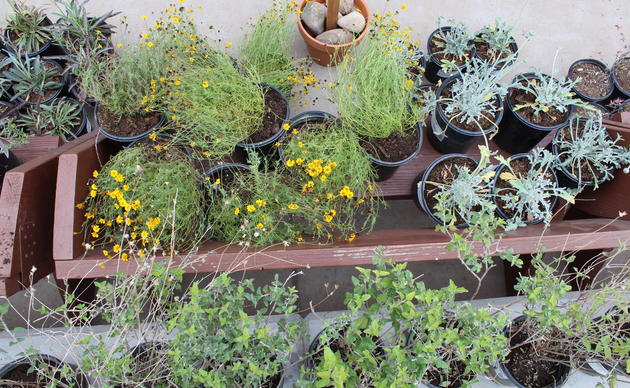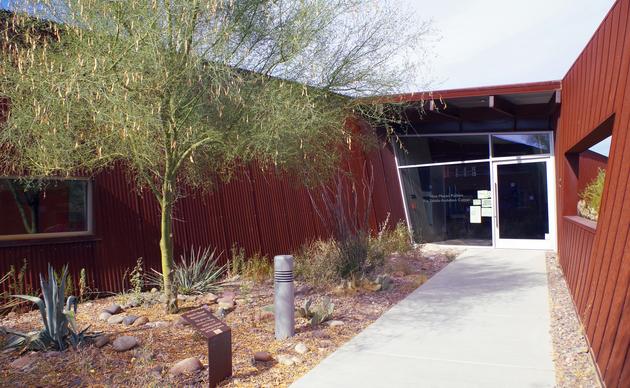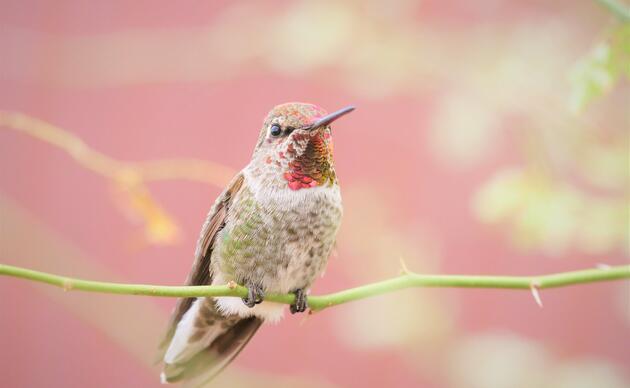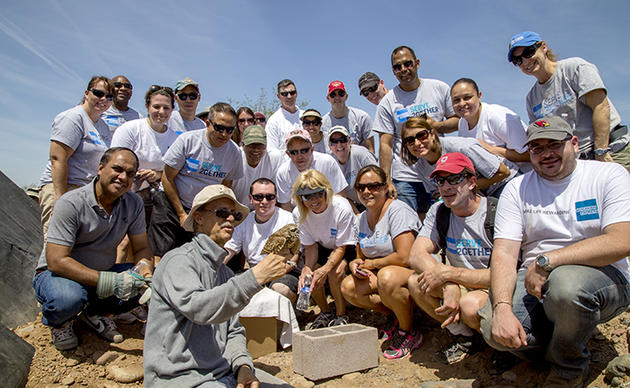March is the month of shamrocks, green beer, and mostly perfect weather here in Arizona—the ideal time to get out in your yard or patio and beautify! Take “going green” for the season literally by adding some bird-friendly native plants to your space.
Just as we enjoy a well-stocked, variety-filled refrigerator, birds also appreciate having meal choices, and it is easier than you think to deliver. Consider these stress-free garden additions—they are easy to remember, just think of a four-leaved Shamrock to ensure that your garden provides sips, seeds, shelter and safety:
Sips
Nectar-producing plants probably provide the best bang for your buck when you are looking to up activity in the garden. Hummingbirds are especially easy to attract and fascinating to watch. Great choices for desert areas include: Chuparosa (Justicia californica), penstemons (Penstemon spp) and Fairy Duster (Calliandra eriophylla)
Seeds
Low-growing and/or large headed flowering plants contribute to your garden’s bounty even after the flowers have faded. Nutritious seeds are prized by ground-foraging birds like Gambel’s Quail, Abert’s Towhees and both our resident and wintering sparrows. Best bets for the garden include Desert Marigolds (Baileya multitrada), native sunflowers (Helianthus annus), and our native buckwheat species (Eriogognum spp).
Shelter
Most native plants have evolved to host—you guessed it—native insects. Bugs are birds’ energy bars—lots of calories in small, easy to chomp packages. By providing insect shelter, you are supporting our diminishing pollinators AND helping birds. Any of our acacias (Acacia spp, Brittlebush (Encelia farinose), Creosote (Larrea tridentate), Desert Lavender (Hyptis emoryi) and Globe Mallow (Sphaeralcia ambigua) are all readily available and are great garden choices. Native milkweeds (Asclepias spp) should also be included in order to support endangered Monarch Butterflies—even though few birds will eat them—we should all do our part to help these amazing creatures. Insect eating birds that you can expect to see include Say’s Phoebes, wintering Ruby-Crowned Kinglets and migratory warblers and vireos.
Safety
Dense, thorny plants may not be fun to prune, but the extra work is worth it to provide our feathered friends with safe shelter for resting and nesting. Desert Hackberry (Celtis Pallida) makes a wonderful evergreen screen and seasonally produces edible red berries. Learn more about Desert Hackberry here. Other great choices include Wolfberry (Lycium andersonii), Mesquite (Prosopis spp), and med-height cactus such as Prickly Pear (Opuntia spp) and cholla (Cylindropuntia spp). Common garden nesters include Northern Mockingbird and House Finch.
Did you notice that most plants mentioned above provide more than one resource to birds and to the humans that enjoy them? That is the magic of native plants! To learn more about Plants for Birds, see Audubon’s Native Plant Database below and get a specialized plant list based on your zip code! Need help finding plants? Check out this local native plant source list. Or, come to the Rio Salado Audubon Center for our ongoing native plant sale—supplies are getting limited, however.
Want to help in Audubon's garden? Come out to the Rio Salado Audubon Center on March 16 for our monthly conservation workday. Volunteers will plant, weed, and clear trails. All ages welcome and no experience necessary.
Who needs to search for a “pot o’ gold” when you can have a vibrant yard full of healthy birds? Happy March!




